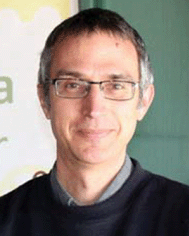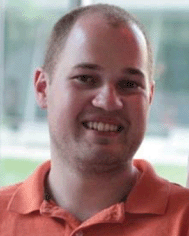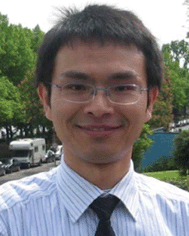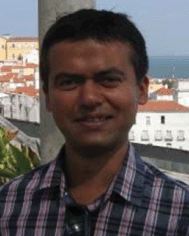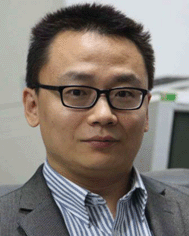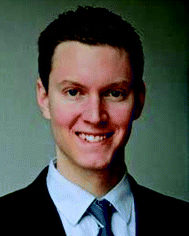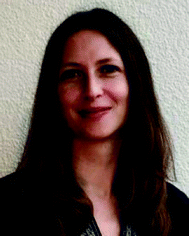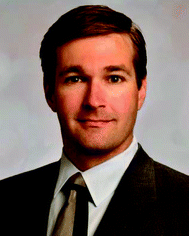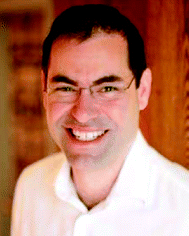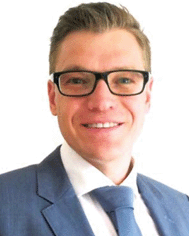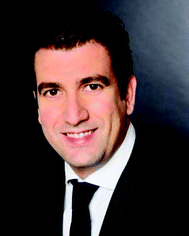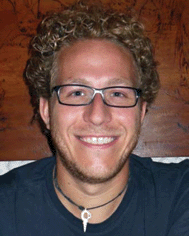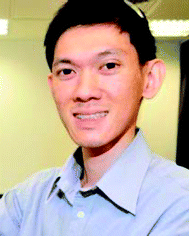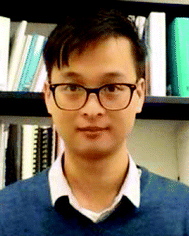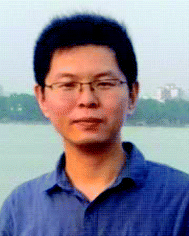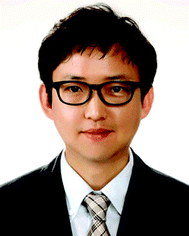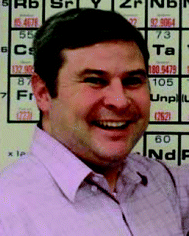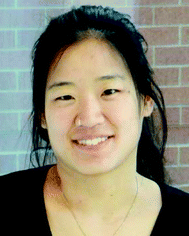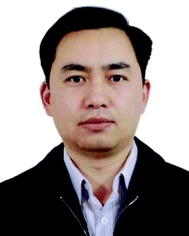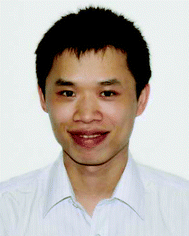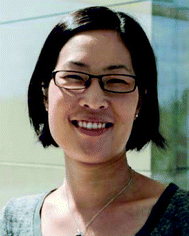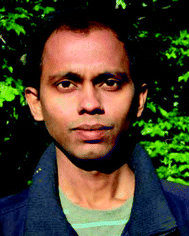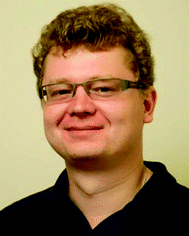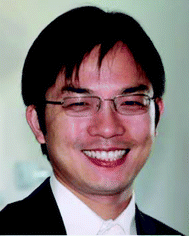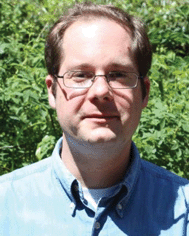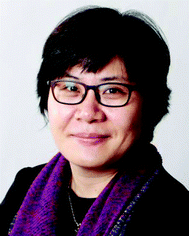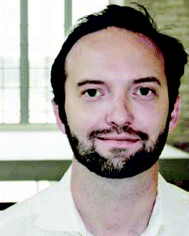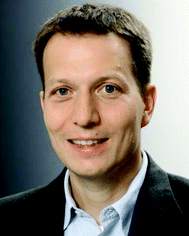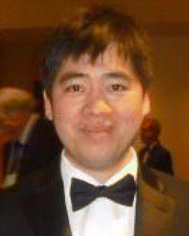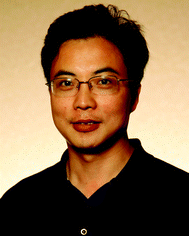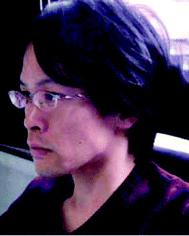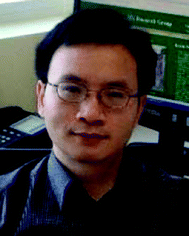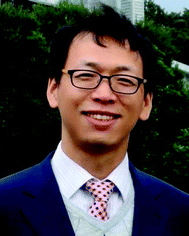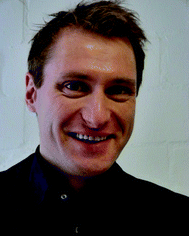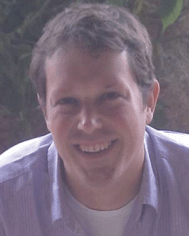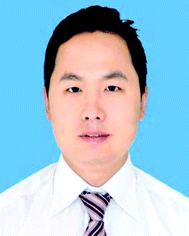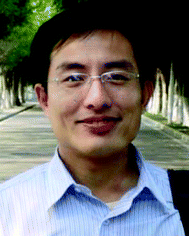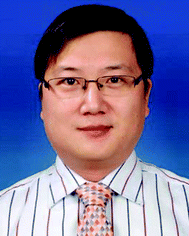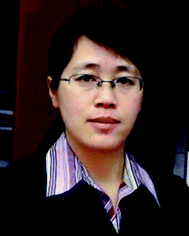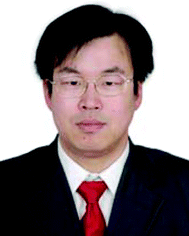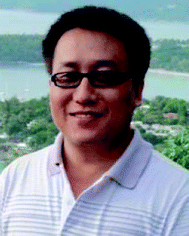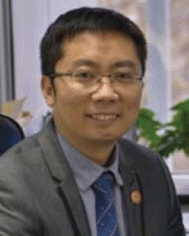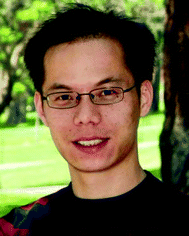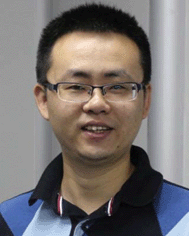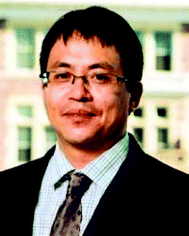Contributors to the 1st Emerging Investigators collection
Abstract
Welcome to the inaugural “Emerging Investigators” themed collection from Inorganic Chemistry Frontiers! The purpose of this collection is to recognize outstanding inorganic chemists in the early stages of their independent careers. We thank all of the 49 contributors from throughout the world. Here we introduce to you these up-and-coming scientists and their exciting research in today's inorganic chemistry.
A. Gaita Ariño obtained his PhD in 2003 working with Prof. Coronado and Dr Clemente Juan in the University of Valencia (UV). After collaborations with Dr Suaud in Toulouse and Prof. Loss in Basel, he moved on to a three-year postdoctoral stay with Prof. Stamp in Vancouver. Since 2010, he has enjoyed a postdoctoral position in the UV, and since August 2015 he has been funded by an ERC Consolidator Grant. He is currently interested in the theoretical modelling of rare-earth single-ion magnets, in the rational design of coherent molecular spin qubits and in modelling of the coupling of lattice phonons with molecular excitations.
Link to his article: http://xlink.rsc.org/?doi=C5QI00296F
Alexander Spokoyny was born, and spent his childhood and teenage years, in Moscow, Russia. After his family emigrated to the United States in 2001, Alex attended UCLA, where he was introduced to the area of boron cluster chemistry working as an undergraduate researcher in the laboratory of Prof. M. Frederick Hawthorne. He continued his graduate chemistry education at Northwestern University under the guidance of Prof. Chad A. Mirkin. Upon receiving his Ph.D. in inorganic chemistry in 2011, Alex decided to move further east, where he was an NIH Post-Doctoral Fellow working in the laboratories of Professors Stephen L. Buchwald and Bradley L. Pentelute at MIT. There his research interests involved the development of new bioconjugation strategies for peptides and proteins, and regulation of protein–protein interactions. Alex returned to UCLA in 2014 to assume a position as an Assistant Professor in the Department of Chemistry and Biochemistry. His laboratory's research is focused on a broad range of problems in materials science, catalysis and chemical biology, with a fundamental emphasis on cluster chemistry.
Link to his article: http://xlink.rsc.org/?doi=C5QI00263J
Bin Zhang received his PhD degree from the University of Science and Technology of China in 2007. He carried out postdoctoral research at the University of Pennsylvania (2007.7–2008.7) and worked as an Alexander von Humboldt fellow in the Max Planck Institute of Colloids and Interfaces (2008.8–2009.7). Currently, he is a professor in the chemistry department at Tianjin University and Collaborative Innovation Center of Chemical Science and Engineering (Tianjin). He mainly focuses on the development of chemical transformation strategies to prepare porous and ultrathin nanomaterials, and their hybrids, for catalytic energy applications.
Link to his article: http://xlink.rsc.org/?doi=C5QI00217F
Biprajit Sarkar grew up in Assam, and studied in Delhi and Mumbai, before moving to Stuttgart to pursue his doctoral studies. After spending a post-doctoral year in Strasbourg, Biprajit moved back to Stuttgart to work on his Habilitation, which he finished in 2011. At the same time, he was offered a Professor position at the Free University in Berlin where he is stationed now. His group uses a molecular synthetic approach for designing catalysts and switchable molecular materials with a strong focus on redox-active and mesoionic carbene ligands. The group also specializes in electrochemical and spectroelectrochemical methods. Recently, Biprajit was selected as one of the rising stars at the ICCC-41, was a visiting Professor at IIT Bombay, and was awarded the Zasshikai Lectureship at the University of Tokyo.
Link to his article: http://xlink.rsc.org/?doi=C5QI00163C
Bo Wang obtained his B.S. and M.S. degrees from Peking University in 2004 and the University of Michigan in 2006, respectively, and his Ph.D. from the University of California Los Angeles in 2008. He has been a professor in the School of Chemistry, Beijing Institute of Technology since 2011. His research interests are focused on the design and synthesis of novel functional porous materials, energy storage, advanced battery materials, hydrogen and methane storage, gas purification, and toxicant capture and sensing.
Link to his article: http://xlink.rsc.org/?doi=C6QI00042H
Changzheng Wu obtained his B.S. degree (2002) and his Ph.D. degree (2007) from the Department of Chemistry at the University of Science and Technology of China (USTC). He then worked as a postdoctoral fellow in the Hefei National Laboratory for Physical Sciences at the Microscale. Since 2012, he has been a full professor at the Department of Chemistry, USTC. Prof. Wu's current research interests are focused on the synthesis and characterization of inorganic 2D nanomaterials, as well as the regulation of their intrinsic physical properties for wide applications in energy storage or energy conversion. He has received a number of prestigious awards, including Top-notch Young Talents of the Chinese Organization Department (2015), a Chinese Chemical Society Young Chemist Award (2014), a National Prize for Natural Sciences of China (Second Place), and so on.
Link to his article: http://xlink.rsc.org/?doi=C5QI00197H
Christopher C. Scarborough was born in Orange County, California. He obtained his B.S. in Chemistry in 2003 from the University of California – Irvine and conducted undergraduate research under Gregory Weiss. His graduate studies at the University of Wisconsin under the supervision of Shannon Stahl focused on the development of axially chiral 7-membered N-heterocyclic carbene ligands and their application to palladium catalysis. After completion of his PhD in 2008, Chris was an Alexander von Humboldt postdoctoral researcher at the Max Planck Institute for Bioinorganic Chemistry under Karl Wieghardt, where he examined the electronic structure of electron-rich metal-bipyridine complexes. In 2011, Chris began his independent career at Emory University, where he has developed a research program exploring novel methods of activating O
2 and H
2O
2 for oxidation catalysis.
Link to his article: http://xlink.rsc.org/?doi=C5QI00233H
Corinna Hess received a B.S. in Chemistry from the University of Chicago, where she carried out undergraduate research in the group of Prof. Gregory Hillhouse. She completed her PhD studies in the area of bioinorganic chemistry at the California Institute of Technology under the supervision of Prof. Harry Gray. Corinna further developed her interests in catalysis and inorganic spectroscopy during postdoctoral studies at the University of California, Berkeley (with Prof. Judith Klinman) and the Max Planck Institute for Bioinorganic Chemistry (with Prof. Karl Wieghardt). The research projects were focused on the mechanisms of copper oxygenases and the study of metal complexes coordinated with redox-active ligands. She began her independent career as a lecturer at Durham University, and was appointed as Assistant Professor of Bioinorganic Chemistry at the Technische Universität München in 2014. Her research centers on design and electronic structure studies of new transition metal complexes, and the development of catalysts for small molecule activation.
Link to her article: http://xlink.rsc.org/?doi=C5QI00298B
David Jenkins was born and raised in the “western gate to the sunshine state,” Pensacola, Florida. He received his B.A. in Chemistry in 2000 from Cornell University and conducted undergraduate research under Héctor Abruña. His graduate studies at Caltech with Jonas Peters focused on the stabilization of novel metal-imide bonds in pseudo-tetrahedral cobalt complexes. After completion of his PhD, he joined the laboratory of Jeffrey Long as a Miller Fellow at UC Berkeley, where he investigated molecular magnets. In 2008, David began his independent career at the University of Tennessee where his research program is focused on synthetic inorganic chemistry with emphases on catalytic aziridination and nanoporous breathable materials. He was promoted to Mamantov Associate Professor of Chemistry in 2014. When he is not in the lab, David enjoys road cycling and kayaking across East Tennessee.
Link to his article: http://xlink.rsc.org/?doi=C5QI00135H
Eli Zysman-Colman obtained his Ph.D. from McGill University in 2003 under the supervision of Prof. David N. Harpp as an FCAR scholar, where he conducted research on physical organic sulfur chemistry. He then completed two postdoctoral fellowships, one in supramolecular chemistry with Jay Siegel at the Organic Chemistry Institute, University of Zurich as an FQRNT fellow and the other in inorganic materials chemistry with Stefan Bernhard at Princeton University as a PCCM fellow. He joined the Department of Chemistry at the Université de Sherbrooke in Quebec, Canada as an assistant professor in 2007. In 2013, he moved to the University of St Andrews where he is an EaStCHEM Research Fellow. His research program is focused on the rational design of: (I) luminophores for energy-efficient visual displays and flat panel lighting based on organic light emitting diode (OLED) and light-emitting electrochemical cell (LEEC) device architectures; (II) light harvesting dyes for dye-sensitized solar cells (DSSCs) and organic photovoltaics; (III) sensing materials employed in electrochemiluminescence; and (IV) photoredox catalysts for organic reactions.
Link to his article: http://xlink.rsc.org/?doi=C5QI00177C
Fangyi Cheng obtained his B.S. and Ph.D. degree from Nankai University in 2003 and 2009, respectively. He has been a leading young investigator in the College of Chemistry, Nankai University since 2013 and is currently a visiting scholar at the University of California, Los Angeles. His research interests cover inorganic synthesis and energy materials chemistry, with an emphasis on the controlled preparation and exploration of the properties of 3d transition metal oxides for electrocatalysis and battery applications.
Link to his article: http://xlink.rsc.org/?doi=C6QI00056H
Gilles Gasser completed a PhD thesis on supramolecular chemistry in the group of Prof. Helen Stoeckli-Evans at the University of Neuchâtel (2004). After post-doctoral stays at Monash University (Australia) with Prof. Leone Spiccia in bioinorganic chemistry, and at the Ruhr-University Bochum (Germany) with Prof. Nils Metzler-Nolte in bioorganometallic chemistry, Gilles started his independent research career at the University of Zurich, first as a Swiss National Science Foundation (SNSF) Ambizione fellow (2010) and then as a SNSF Assistant Professor (2011). Gilles is the recipient of several awards including the Werner Prize from the Swiss Chemical Society for outstanding independent chemical research (2015).
Link to his article: http://xlink.rsc.org/?doi=C5QI00270B
Gonzalo Abellán was born in Orihuela (Spain). He obtained his Ph.D. in the group of Prof. E. Coronado at the Institute of Molecular Science (ICMol – University of Valencia) in 2014 in the field of hybrid magnetic materials based on layered double hydroxides. Currently he is a Marie Curie Fellow at the University of Erlangen-Nuremberg in the group of Prof. Andreas Hirsch, working on the chemical functionalization of graphene and related 2D materials. Gonzalo is the recipient of several awards including the E-MRS Graduate Student Award and the Valencia Idea Prize in Energy and Environment, among others. He is pursuing his independent career focused on the chemistry of 2D materials, hybrid materials, magnetism, and energy storage and conversion.
Link to his article: http://xlink.rsc.org/?doi=C6QI00009F
Guillermo Mínguez Espallargas graduated from the University of Seville (Spain) in 2004, and received his PhD in 2007 from the University of Sheffield (UK) under the supervision of Prof. Lee Brammer. In 2008, he moved to the Instituto de Ciencia Molecular (ICMol) of the University of Valencia (Spain), where he currently holds a “Ramón y Cajal” fellowship (selected for 1
st position in the national ranking from the 2013 call in the Chemistry area). He is a co-author of 52 papers, with an h-index of 21. He was the gold medal winner of the European Young Chemist Award in 2008, received the RSC Dalton Young Chemist Award in 2009, and was selected to attend the 63
rd Lindau Nobel Laureate Meeting in 2013. His research interests cover MOFs, molecular magnetism, non-covalent interactions, and solid–gas reactions, among other topics.
Link to his article: http://xlink.rsc.org/?doi=C5QI00277J
Han Sen Soo graduated from the Massachusetts Institute of Technology (MIT) with S.B. and S.M. degrees in 2003 under the tutelage of Prof. Christopher C. Cummins. He subsequently joined the research group of Prof. Christopher J. Chang at the University of California, Berkeley, working on small molecule activation using Earth-abundant elements. After completing his Ph.D. studies in 2009, Han Sen journeyed up the hill to become a post-doctoral fellow with Dr Heinz Frei in the Helios Solar Energy Research Center (SERC). He employed X-ray absorption and time-resolved optical and FT-IR spectroscopic methods to study organic-nanomaterial hybrid systems applied in artificial photosynthesis. Han Sen embarked on his independent career as a Nanyang Assistant Professor in the Division of Chemistry and Biological Chemistry, School of Physical and Mathematical Sciences, at Nanyang Technological University in 2012. The overarching theme of his research program is the creation of artificial photosynthetic systems. His current research interests include the development of molecular photosensitizers and catalysts to harvest sunlight for CO
2 and proton reduction to produce solar fuels and chemicals. His team is also preparing photocatalysts and mesoporous materials derived from Earth-abundant elements to valorize biomass lignin and degrade environmental pollutants.
Link to his article: http://xlink.rsc.org/?doi=C5QI00221D
Ho Yu Au-Yeung was born and raised in Hong Kong. He obtained his BSc (1st Hons) and MPhil from The Chinese University of Hong Kong, and later a PhD from the University of Cambridge as a Croucher Scholar with Prof. Jeremy K. M. Sanders. He then joined the group of Prof. Christopher J. Chang at the University of California, Berkeley as a Croucher Postdoctoral Fellow. In 2013, he started his independent research as an Assistant Professor in the Department of Chemistry at the University of Hong Kong. Research in his group is centred on supramolecular chemistry and molecular recognition.
Link to his article: http://xlink.rsc.org/?doi=C5QI00227C
Hui Wei received his B.S. degree from Nanjing University in 2003 and Ph.D. degree from the Changchun Institute of Applied Chemistry, Chinese Academy of Sciences in 2008. Currently he is a professor at Nanjing University, working on the design and synthesis of functional nanomaterials (such as nanozymes) and the development of new methodologies for analytical and biomedical applications.
Link to his article: http://xlink.rsc.org/?doi=C5QI00240K
Jaeheung Cho received his B.S. (in 2000) and M.S. (in 2002) in Chemistry from Pukyong National University in Korea and completed his Ph.D degree in Inorganic Chemistry at Kanazawa University in Japan in 2005 under the guidance of Professor Masatatsu Suzuki, during which he examined the dinuclear metal-active oxygen species in aliphatic C–H bond functionalization. After graduation, he moved to the group of Professor Charles G. Riordan at the University of Delaware in the US as a Postdoctoral Fellow. Then, he joined Ewha Womans University in Korea as a Full-Time Lecturer and a Professor for Special Appointment where he investigated models of mononuclear metal-active oxygen intermediates, in collaboration with Professor Wonwoo Nam. In 2010, he got the Distinguished Lectureship Award from the Chemical Society of Japan. In 2012, he began his independent career at DGIST in Korea as an Assistant Professor. His research interests focus on the synthesis, characterization and reactivity of biomimetic complexes, especially those mimicking active sites of metalloenzymes.
Link to his article: http://xlink.rsc.org/?doi=C5QI00206K
Jeffery A. Byers attended Washington University in St. Louis, where he received his B.A. in Chemistry in 2000. In 2007, Jeff obtained his Ph.D. from the California Institute of Technology under the guidance of Prof. John E. Bercaw. After a postdoctoral position in the laboratory of Prof. Timothy F. Jamison at the Massachusetts Institute of Technology, Jeff started his independent career at Boston College in the summer of 2011, where he is currently an Assistant Professor of Chemistry. The research carried out in the Byers group centers around fundamental transition metal chemistry and its application in chemical catalysis pertaining to the synthesis of new biodegradable polymers, energy storage, and cross coupling reactions.
Link to his article: http://xlink.rsc.org/?doi=C5QI00295H
Jenny Yang earned her B.S. at the University of California, Berkeley working with Professor Jeffrey R. Long, and her Ph.D. in Inorganic Chemistry at the Massachusetts Institute of Technology with Professor Daniel G. Nocera. After a postdoctoral appointment at the Pacific Northwest National Laboratory (PNNL) with Dr Daniel L. DuBois, she worked as a staff scientist in the Center for Molecular Electrocatalysis at PNNL and the Joint Center for Artificial Photosynthesis at the California Institute of Technology. She began her appointment as an Assistant Professor of Chemistry at the University of California, Irvine in the summer of 2013. Her research interests include the discovery and study of inorganic electrocatalysts for the generation and utilization of chemical fuels. These studies have primarily focused on the effect of secondary coordination sphere interactions and the effect of thermochemical properties on catalytic activity.
Link to her article: http://xlink.rsc.org/?doi=C6QI00010J
Jian Zhang was born in Hunan, China. He graduated from Xiamen University in 2001 and obtained his PhD in 2006 from the Fujian Institute of Research on the Structure of Matter, Chinese Academy of Sciences (FJIRSM-CAS). After three years of postdoctoral work at California State University, Long Beach, he went back to FJIRSM-CAS and served as a full research professor in September, 2009. His current research interests are in the synthesis and application of metal–organic frameworks. He has published 200 peer-reviewed research papers with over 5000 citations (Research ID: B-5056-2011). For his outstanding achievements in chemistry research, he has won several awards including the “Chinese Chemical Society Prize for Young Scientist 2011”, “High-level Innovative Talents of Fujian Province” and “Outstanding Innovative Talents of Shanghai Branch of Chinese Academy of Science”.
Link to his article: http://xlink.rsc.org/?doi=C5QI00155B
Jie-Peng Zhang obtained his B.Sc. in 2000 and Ph.D. in 2005 under the supervision of Prof. Xiao-Ming Chen at Sun Yat-Sen University (SYSU). He was a JSPS postdoc in Prof. Susumu Kitagawa's group at Kyoto University from 2005 to 2007. After that, he moved back and joined SYSU in 2007, and became a professor in 2011. His current research interests are in the chemistry of porous coordination polymers.
Link to his article: http://xlink.rsc.org/?doi=C5QI00157A
Judy J. Cha is the Carol and Douglas Melamed Assistant Professor in the Department of Mechanical Engineering and Materials Science at Yale University, CT, USA. She is a member of the Energy Sciences Institute at Yale West Campus. Her current research includes investigating two-dimensional chalcogenide thin films and nanostructures for energy and novel electronic applications, and topological insulator and topological crystalline insulator nanostructures for fundamental condensed matter studies.
Link to her article: http://xlink.rsc.org/?doi=C5QI00242G
Kanishka Biswas obtained his MS and Ph.D degree (2009) from the Solid State Structural Chemistry Unit, Indian Institute of Science, and did postdoctoral research at the Department of Chemistry, Northwestern University (2009–2012). He is now an Assistant Professor at the New Chemistry Unit, Jawaharlal Nehru Centre for Advanced Scientific Research (JNCASR), Bangalore. He is pursuing research into the solid state inorganic chemistry of metal chalcogenides, thermoelectrics, topological insulators and intergrowth 2D nanosheets. He has published 69 research papers and 3 book chapters. He is a recipient of the Ramanujan Fellowship from the Department of Science and Technology, India. He is a Young Affiliate of The World Academy of Sciences (TWAS) and an Associate of the Indian Academy of Science, India. He is also a recipient of the Young Scientist Platinum Jubilee award-2015 from The National Academy of Sciences (NASI), India.
Link to his article: http://xlink.rsc.org/?doi=C5QI00230C
Kirill Kovnir is an Assistant Professor at the University of California, Davis. He was born in Kirovograd, Ukraine. He studied chemistry, and received a Ph.D., at the Lomonosov Moscow State University with Prof. A. V. Shevelkov, scrutinizing inverse clathrates. Afterwards he travelled between the Max Planck Institute for Chemical Physics of Solids in Dresden, and the Fritz Haber Institute of the Max Planck Society in Berlin, exploring the potential of intermetallic compounds in heterogeneous catalysis supervised by Prof. Yu. Grin and Prof. R. Schlögl. In 2008, he moved to Florida State University where he acquired a comprehensive knowledge of the magnetism of complex solids under the guidance of Prof. M. Shatruk. Kirill's research interests are in the broad fields of solid state and materials chemistry. Research in his group is focused on the synthesis of novel thermoelectric, superconducting, magnetic, and low-dimensional materials, and the exploration of their crystal structure, chemical bonding, and physical properties. Understanding the structure–property relationships is key to the rational design of such materials.
Link to his article: http://xlink.rsc.org/?doi=C5QI00225G
Liangbing Hu received his B.S. in physics from the University of Science and Technology of China (USTC) in 2002, where he worked with Prof. Yuheng Zhang on colossal magnetoresistance (CMR) materials for three years. He did his Ph.D. research at UCLA (with George Gruner), focusing on carbon nanotube based nanoelectronics (2002–2007). In 2006, he joined Unidym Inc as a co-founding scientist. At Unidym, Liangbing's role was in the development of roll-to-roll printed carbon nanotube transparent electrodes and device integration into touch screens, LCDs, flexible OLEDs and solar cells. He worked at Stanford University (with Yi Cui) from 2009–2011, where he work on various energy devices based on nanomaterials and nanostructures. Currently, he is an assistant professor at the University of Maryland College Park. His research interests include nanomaterials and nanostructures, roll-to-roll nanomanufacturing, energy storage focusing on solid-state batteries and Na ion batteries, and printed electronics.
Link to his article: http://xlink.rsc.org/?doi=C5QI00288E
Manolis J. Manos is an Assistant Professor of Inorganic Chemistry at the University of Ioannina, Greece. He completed his PhD (2003) at the University of Ioannina, under the supervision of Prof. T. Kabanos. He performed post-doctoral research in the group of Prof. M. Kanatzidis at Michigan State and Northwestern University (2004–end of 2008) and also in the group of Associate Professor A. Tasiopoulos at the University of Cyprus (2009–2012). He was appointed as a lecturer in September 2012. His research is focused on the synthesis of inorganic materials, hybrid inorganic–organic materials and composites with interesting ion-exchange and luminescence sensing properties.
Link to his article: http://xlink.rsc.org/?doi=C5QI00303B
Marc D. Walter studied at the Technische Universität (TU) Kaiserslautern in Germany. He carried out his PhD (awarded in 2005) jointly with Helmut Sitzmann in Kaiserslautern and Richard A. Andersen at the University of California, Berkeley. From 2006–2010, he was a postdoctoral research fellow with Maurice S. Brookhart at the University of North Carolina at Chapel Hill. In 2010, he started his independent career at the TU Braunschweig (supported by the Emmy Noether Program of the Deutsche Forschungsgemeinschaft (DFG; German Research Foundation)). His research is focused on the activation and functionalization of small molecules using highly reactive organometallic complexes. In 2014, he received the DFG Heinz Maier-Leibnitz Prize and the Wöhler-BASF Young Investigator Award of the Wöhler-Vereinigung (the inorganic subdivision of the Gesellschaft Deutscher Chemiker (GDCh; German Chemical Society)). Since 2015, he has also been supported by a DFG Heisenberg fellowship.
Link to his article: http://xlink.rsc.org/?doi=C5QI00235D
Mi Hee Lim is an Associate Professor in the Department of Chemistry at the Ulsan Institute of Science and Technology (UNIST), Ulsan, Korea. She obtained her MSc degree under the supervision of Professor Wonwoo Nam at Ewha Womans University, Seoul, Korea, and a PhD degree under the supervision of Professor Stephen J. Lippard at MIT. She was a TRDRP postdoctoral fellow with Professor Jacqueline K. Barton at Caltech. In the summer of 2008, she began her independent position as an Assistant Professor of Chemistry and a Research Assistant Professor in the Life Sciences Institute at the University of Michigan, Ann Arbor, MI, USA. In the fall of 2013, Dr Lim joined UNIST as an Associate Professor with tenure. Her current research focuses on elucidating the roles of metals, proteins, and reactive oxygen species in human neurodegenerative diseases.
Link to her article: http://xlink.rsc.org/?doi=C5QI00219B
Michael Nippe was born and raised in Berlin, Germany. He received his Dipl.-Chem. in 2007 from TU-Berlin after conducting research under Andreas Grohmann and Karl Wieghardt (Max-Planck Institute for Bioinorganic Chemistry). His graduate studies at UW-Madison with John Berry were focused on studying the influence of metal–metal interactions on reactivity and spectroscopy. In 2011, Michael moved as a postdoctoral researcher to Berkeley where he worked at UC-Berkeley and LBNL with Jeffrey Long, Christopher Chang, and Kenneth Raymond as part of the Joint Center for Artificial Photosynthesis and the LBNL Chemical Catalysis Program. During this time he investigated molecular electrocatalysts, molecular magnets, and supramolecular cage structures. In 2014, Michael started his independent research group at Texas A&M University. Current major research areas of the group include the magnetization dynamics of heterometallic lanthanide complexes, molecular strategies towards improved activation and conversion of energy-relevant small molecules, and supramolecular approaches towards drug delivery and imaging.
Link to his article: http://xlink.rsc.org/?doi=C5QI00224A
Paul Kögerler graduated with a Dr rer. nat. degree, after working with Prof. Achim Müller, from the University of Bielefeld (Germany) in 2000, followed by a postdoctoral research stay at the Department of Physics and Astronomy at Iowa State University (USA). In 2003, he was appointed as a tenured Associate Scientist at the U.S. DOE Ames Laboratory, before returning to Germany in 2006 as a Professor of Chemistry at the Institute of Inorganic Chemistry at RWTH Aachen University and Group Leader for Molecular Magnetism at the Peter Grünberg Institute, Research Centre Jülich.
Link to his article: http://xlink.rsc.org/?doi=C5QI00278H
Pingwu Du received a B.S. degree from Wuhan University (2001) and a Ph.D. degree from the University of Rochester (2009) under the direction of Professor Richard Eisenberg. After postdoctoral training at MIT and Argonne National Laboratory (Director's Fellow), he joined the University of Science and Technology of China (USTC) as a faculty member in 2012. His current research is focused on photocatalysis and inorganic chemistry. He is a recipient of the Young Investigator Award (Inorganic Division, 2008) and Nobel Laureate Signature Award (2011) of the American Chemical Society.
Link to his article: http://xlink.rsc.org/?doi=C5QI00198F
Qichun Zhang obtained his B.S. at Nanjing University in China in 1992, a M.S. in physical organic chemistry (organic solid lab) at the Institute of Chemistry, Chinese Academy of Sciences (Prof. Peiji Wu/Daoben Zhu's group, ICCAS, Beijing) in 1998, a M.S. in organic chemistry (Prof. Fred Wudl's group) at the University of California, Los Angeles (USA), and completed his Ph.D. in inorganic chemistry at the University of California Riverside (Prof. Pingyun Feng's group, USA) in 2007. Then, he joined Prof. Kanatzidis’ group at Northwestern University as a Postdoctoral Fellow (Oct. 2007 –Dec. 2008). In Jan. 2009, he joined the School of Materials Science and Engineering at Nanyang Technological University (NTU, Singapore) as an Assistant Professor. On Mar 1st, 2014, he was promoted to Associate Professor with tenure and on Dec 1st, 2014, he became an adjunct Associate Professor at the Division of Chemistry and Biological Chemistry, School of Physical and Mathematical Sciences, Nanyang Technological University. Besides this, he also gained three years of work experience at the research institute of Nanjing Chemical Industry Co. (Aug. 1992 – Aug. 1995) and two years of research experience at ICCAS (Aug. 1998 – Jun 2000). He received a TCT fellowship in 2013 and a lectureship from National Taiwan University in 2014. He has published >190 papers and 4 patents (H-index: 37).
Link to his article: http://xlink.rsc.org/?doi=C5QI00194C
Ryota Sakamoto was born in Yamagata Village, Nagano, Japan in 1980. He graduated from The University of Tokyo (Japan) in 2002, and received his Ph.D. degree from the same university in 2007 under the supervision of Prof. Hiroshi Nishihara. Then, he was appointed as an assistant professor at the Tokyo University of Science (Japan), working with Prof. Takeshi Yamamura. In 2010, he moved to The University of Tokyo, joining Prof. Nishihara's group again. His current research interests lie in the construction of molecule-based nanostructures, and photonic and electronic devices thereof.
Link to his article: http://xlink.rsc.org/?doi=C5QI00239G
Shengqian Ma obtained his B.S. degree from Jilin University, China in 2003, and graduated from Miami University (Ohio) with a Ph.D. degree under the supervision of Hong-Cai Joe Zhou (currently at Texas A&M University) in 2008. After finishing a two-year Director's Postdoctoral Fellowship at Argonne National Laboratory, he joined the Department of Chemistry at the University of South Florida (USF) as an Assistant Professor in August 2010. He was promoted to Associate Professor with early tenure in 2015. He received the 2015 USF Faculty Outstanding Research Achievement Award. He is the recipient of the 2014 NSF CAREER Award and has been selected as a Thomson Reuters Highly Cited Researcher in both 2014 and 2015; he was also awarded the IUPAC-2015 Young Chemist Travel Award and the 2009 IUPAC Prize for Young Chemists from the International Union of Pure & Applied Chemistry (IUPAC). He received a Young Investigator Award from the American Chemical Society (ACS) Division of Inorganic Chemistry and the Director's Postdoctoral Fellowship from Argonne National Laboratory in 2008 as well. His current research interests are focused on the development of functional porous materials including metal–organic frameworks (MOFs) and porous organic polymers (POPs) for energy, biological and environmental-related applications. He has published more than 100 papers (over 60 since beginning his independent career) with the total number of citations over 8800 and an H-index of 47.
Link to his article: http://xlink.rsc.org/?doi=C5QI00229J
Sungho Yoon received his B.S. and Ph.D. degree from Korea University in 1998 and the Massachusetts Institute of Technology in 2004, respectively, and worked as a post-doctoral fellow at the University of California, Berkeley during 2004–2005 and as a researcher at LG Chem. Research Park during 2005–2007. He has worked on C1 chemistry at Kookmin University since 2007. His research interests are focused on the synthesis of covalent organic frameworks and catalysts for hydrogenation and carbonylation.
Link to his article: http://xlink.rsc.org/?doi=C5QI00231A
Sven Schneider received his PhD degree from Humboldt University Berlin, Germany, in 2003. He then joined the group of Tobin Marks at Northwestern University for postdoctoral research. In 2006, he returned back to Germany and started his independent career as a group leader in Technical University Munich. He was an Associate Professor at the University of Erlangen-Nürnberg from October 2010 to March 2012. He is now a full professor at the University of Goettingen. His research interests are mainly focused on cooperative dehydrogenation/hydrogenation of inorganic substrates and the design of electronically highly unsaturated platinum metal complexes. In April 2015, he was promoted to director of the inorganic chemistry institute at the University of Erlangen-Nürnberg.
Link to his article: http://xlink.rsc.org/?doi=C5QI00267B
T. David Harris was born in Poca, West Virginia, in 1981. He received a B.S. in Chemistry from Marshall University in 2004, where he worked in the laboratory of Prof. Michael P. Castellani. He then carried out graduate research with Prof. Jeffrey R. Long at the University of California, Berkeley, where he received his Ph.D. in Chemistry in 2010. Following postdoctoral work with Prof. Theodore A. Betley at Harvard University, he joined the Department of Chemistry faculty at Northwestern University in 2012. His research group focuses on the synthesis of new metal–organic coordination complexes and solids that feature programmable physical and chemical properties, with an emphasis on magnetic molecules and materials.
Link to his article: http://xlink.rsc.org/?doi=C5QI00275C
Tianyou Zhai received his B. S. degree in chemistry from Zhengzhou University in 2003, and then received his Ph.D. degree in physical chemistry from the Institute of Chemistry, Chinese Academy of Sciences (ICCAS) under the supervision of Prof. Jiannian Yao in 2008. Afterwards he joined the National Institute for Materials Science (NIMS) as a JSPS postdoctoral fellow of Prof. Yoshio Bando's group and then as an ICYS-MANA researcher within NIMS. Currently, he is a Chief Professor at the School of Materials Science and Engineering, Huazhong University of Science and Technology (HUST). His research interests include controlled synthesis and exploration of the fundamental physical properties of inorganic functional nanomaterials, as well as investigation of their promising applications in energy science, electronics and optoelectronics. He has authored and co-authored more than 100 peer-reviewed journal articles and 5 book chapters, co-edited 1 book on nanotechnology, and held 7 patents. His publications have been cited more than 5100 times (H-index is 41).
Link to his article: http://xlink.rsc.org/?doi=C5QI00251F
Xiang-Jian Kong received his B.S. degree in chemistry from Liaocheng University in 2003 and his Ph.D. from Xiamen University in 2009. He was a visiting scholar at The University of Arizona (2007–2008) and The University of Chicago (2014–2015). Currently he is an associate professor at Xiamen University. His research interests are in the field of synthetic and materials chemistry of lanthanide clusters and lanthanide–transition metal heterometallic clusters.
Link to his article: http://xlink.rsc.org/?doi=C5QI00249D
Xiaoming Sun was born in 1976. He received a B.S. degree and Ph.D. from the Department of Chemistry, Tsinghua University in 2000 and 2005, respectively. After postdoctoral work at Stanford University, he joined the State Key Laboratory of Chemical Resource Engineering, Beijing University of Chemical Technology in 2008. He received the national science fund for distinguished young scholars from the Natural Science Foundation of China in 2011. His main research interests are focused on the separation and assembly of inorganic nanostructures, the synthesis and separation of carbon nanomaterials and their composites, and structure control and opto-/electro-property investigations of oxide nanoarrays.
Link to his article: http://xlink.rsc.org/?doi=C5QI00232J
Xuefeng Fu received a Ph.D. in Inorganic Chemistry in 2006 from the University of Pennsylvania under the supervision of Prof. Bradford B. Wayland. After around 2 years of post-doctoral research with Prof. Bradford B. Wayland, she joined the faculty of Peking University in Nov. 2007. Currently, she is an Associate Professor under the title “Hundred Talents Program of PKU” in the College of Chemistry and Molecular Engineering at Peking University in China. Her research interests can be broadly defined as in the area of inorganic/organometallic chemistry with a focus on fundamental inorganic and organometallic transformations and mechanistic studies.
Link to her article: http://xlink.rsc.org/?doi=C5QI00269A
Xun Wang received his PhD degree from the Department of Chemistry, Tsinghua University in 2004. He then joined the faculty of the Department of Chemistry, Tsinghua University in 2004, and was promoted to associate professor and full professor in 2005 and 2007, respectively. His current research interests include the synthetic methodology, formation mechanisms, and properties of monodisperse nanocrystals. He has now published 168 peer-reviewed papers with a total citation number of more than 12
![[thin space (1/6-em)]](https://www.rsc.org/images/entities/char_2009.gif)
000 (Oct. 2015). His main awards include Fellow of the Royal Society of Chemistry, ChangJiang Professor (2014), an IUMRS – MRS Singapore Young Researchers Award Nomination (2014), a Science and Technology Award for Chinese Youth (2009), the National Science Foundation for Outstanding Young Scientists (2007) and the IUPAC Prize for Young Chemists (2005).
Link to his article: http://xlink.rsc.org/?doi=C5QI00126A
Ya-Ping Du is currently a full professor and principal investigator at the frontier institute of science and technology of Xi'an Jiaotong University. His research interests include rare earth functional materials, colloidal inorganic nanocrystals, and energy storage and conversion applications. He has published more than 40 papers in peer-reviewed scientific journals and was a winner of the National Science Fund for Excellent Young Scholars in 2015. He obtained his BSc degree and PhD degree from Lanzhou University and Peking University in 2004 and 2009, respectively, and was an assistant professor at the Suzhou Institute of Nano-tech and Nano-bionics, CAS, during 2009–2010 and did postdoctoral research at the Nanyang Technological University of Singapore during 2010–2013.
Link to his article: http://xlink.rsc.org/?doi=C5QI00216H
Yan-Zhen Zheng was born and raised in Guangdong, China. He received his PhD degree in 2007, under the supervision of Xiao-Ming Chen and Ming-Liang Tong (Sun Yat-Sen University), for studying low-dimensional magnetic coordination polymers. Yan-Zhen then moved to Europe with the support of an Alexander von Humboldt Fellowship (under Annie Powell at the Karlsruhe Institute of Technology) and a Marie Curie International Incoming Fellowship (under Richard Winpenny at the University of Manchester) for advanced molecular magnetism studies. During this period, he undertook a short period of postdoctoral training in spintronics at Forschungszentrum Jülich (under Paul Kögerler in RWTH Aachen University). In 2012, he was selected as a “National Young 1000-Plan Scholar” and appointed as a professor at Xi'an Jiaotong University, where he started his own adventure into molecular magnetism research. Currently, his research topics mainly include the design and synthesis of low-coordinate mononuclear single-molecule magnets, magnetic refrigerants based on highly-symmetric lanthanide clusters, geometrically spin-frustrated magnets with extended lattices, and molecular spintronics using electron-delocalised complexes.
Link to his article: http://xlink.rsc.org/?doi=C5QI00308C
Yujie Sun received a B.S. degree in Chemistry from Fudan University in 2005 and conducted undergraduate research under Prof. Heyong He. He then pursued graduate studies in inorganic photochemistry with Prof. Claudia Turro at The Ohio State University and was awarded a Ph.D. degree in 2010. Subsequently, he joined the group of Prof. Christopher J. Chang at the University of California, Berkeley and the Lawrence Berkeley National Laboratory, working on electrocatalytic hydrogen evolution. In 2013, Yujie started his independent career as an assistant professor at Utah State University. His group is interested in developing and understanding inexpensive materials and complexes for energy catalysis and biomedical applications.
Link to his article: http://xlink.rsc.org/?doi=C5QI00196J
Yujie Xiong received his B.S. in chemical physics in 2000 and Ph.D. in inorganic chemistry in 2004 (with Professor Yi Xie), both from the University of Science and Technology of China (USTC). After four years of training with Professors Younan Xia and John A. Rogers, he joined the NSF-NNIN at Washington University in St. Louis as the Principal Scientist and Lab Manager. Since 2011, he has been a Professor of Chemistry at the USTC. He has published more than 100 papers with over 10
![[thin space (1/6-em)]](https://www.rsc.org/images/entities/char_2009.gif)
000 citations (H-index 47). His research interests include the synthesis, fabrication and assembly of inorganic materials for energy and environmental applications. He has received a number of prestigious awards, including the Biomatik Distinguished Faculty Award of the Chinese-American Chemistry & Chemical Biology Professors Association (2015), the Outstanding Young Scholar Award of the Hong Kong Qiushi Science and Technology Foundation (2014), and the Young Cutting-Edge Nanochemistry Researcher Award of the Chinese Chemical Society (2014).
Link to his article: http://xlink.rsc.org/?doi=C5QI00205B
Yunho Lee is an Associate Professor in the Department of Chemistry at the Korea Advanced Institute of Science and Technology (KAIST), Daejeon, Korea. He attended Chonbuk National University where he received a B.S. degree in Chemistry in 2000. Yunho left Korea to begin his doctoral studies under the guidance of Prof. Kenneth D. Karlin at the Johns Hopkins University, Baltimore. After receiving his Ph.D. in 2007, Yunho was a postdoctoral fellow in the laboratory of Prof. Jonas C. Peters at the Massachusetts Institute of Technology and the California Institute of Technology. In the winter of 2010, Yunho returned to Korea and started his independent career as an Assistant Professor at KAIST. He received the Distinguished Lectureship Award from the Chemical Society of Japan in 2011 and the Young Inorganic Chemist Award from the Korea Chemical Society in 2015. He was promoted to Associate Professor in September 2015. His primary research interests are focused on fundamental transition metal coordination chemistry and its application in various small molecule conversions, and catalysis inspired by metalloenzymes.
Link to his article: http://xlink.rsc.org/?doi=C6QI00011H
Zhenqiang ‘Rick’ Wang has been an Assistant Professor in the Department of Chemistry at the University of South Dakota since August 2010. He received his B.S. degree from Peking University in 2000 and his Ph.D. degree from the University of South Florida in 2006. From February 2007 to July 2010, he was a postdoctoral researcher in the laboratory of Prof. Seth Cohen at the University of California, San Diego. He received a National Science Foundation CAREER Award in 2014, and the USD President's Award for Research Excellence (New-Mid Career Faculty) in 2015. His research program at USD is focused on investigating the synthetic and functional application aspects of a new class of supramolecular hosts known as metal–organic supercontainers (MOSCs). In his spare time, he enjoys watching comedy shows and playing pickup soccer games.
Link to his article: http://xlink.rsc.org/?doi=C5QI00212E
|
| This journal is © the Partner Organisations 2016 |
Click here to see how this site uses Cookies. View our privacy policy here. ![[thin space (1/6-em)]](https://www.rsc.org/images/entities/char_2009.gif) 000 (Oct. 2015). His main awards include Fellow of the Royal Society of Chemistry, ChangJiang Professor (2014), an IUMRS – MRS Singapore Young Researchers Award Nomination (2014), a Science and Technology Award for Chinese Youth (2009), the National Science Foundation for Outstanding Young Scientists (2007) and the IUPAC Prize for Young Chemists (2005).
000 (Oct. 2015). His main awards include Fellow of the Royal Society of Chemistry, ChangJiang Professor (2014), an IUMRS – MRS Singapore Young Researchers Award Nomination (2014), a Science and Technology Award for Chinese Youth (2009), the National Science Foundation for Outstanding Young Scientists (2007) and the IUPAC Prize for Young Chemists (2005).
![[thin space (1/6-em)]](https://www.rsc.org/images/entities/char_2009.gif) 000 citations (H-index 47). His research interests include the synthesis, fabrication and assembly of inorganic materials for energy and environmental applications. He has received a number of prestigious awards, including the Biomatik Distinguished Faculty Award of the Chinese-American Chemistry & Chemical Biology Professors Association (2015), the Outstanding Young Scholar Award of the Hong Kong Qiushi Science and Technology Foundation (2014), and the Young Cutting-Edge Nanochemistry Researcher Award of the Chinese Chemical Society (2014).
000 citations (H-index 47). His research interests include the synthesis, fabrication and assembly of inorganic materials for energy and environmental applications. He has received a number of prestigious awards, including the Biomatik Distinguished Faculty Award of the Chinese-American Chemistry & Chemical Biology Professors Association (2015), the Outstanding Young Scholar Award of the Hong Kong Qiushi Science and Technology Foundation (2014), and the Young Cutting-Edge Nanochemistry Researcher Award of the Chinese Chemical Society (2014).

